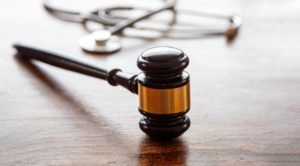Sgt. Neil Dickenson of the Minnesota State Patrol recently talked to the nncnow.com about this very topic. His advice:
The person involved must evaluate the incident and decide on the best course of action to minimize the risk they place themselves and others in.
If it’s not an injury or serious crash, it may be best to get your vehicle out of the lanes of traffic and to a safe location before exiting or exchanging information with the other driver involved. This may be dependent on the amount of traffic, highway conditions and location.
If your vehicle is disabled and you cannot get out of the lanes of traffic, you must evaluate what is more dangerous, staying in the vehicle or leaving it and getting to a place of safety on foot. If you stay in your vehicle, keep your seatbelt. If for some reason you’ve lost sight or contact with the other motorist involved in the crash, report that as soon as possible to law enforcement to prevent issues of charges with a hit and run.
If someone in the crash is injured or killed, the law requires you to call the nearest law enforcement agency or 911 as quickly as possible. Let the dispatcher know exactly where you are, what lane you are in, and if any vehicles are blocking a lane. This information is very useful to all emergency vehicles responding to the scene.
If law enforcement is going to complete the crash report, we will be asking for a driver’s license and for proof of insurance. We will conduct an investigation to determine the cause of the crash by interviewing the drivers, passengers and witnesses. Each driver will receive a copy of the crash report to provide to their insurance company.
If you come upon a crash, and depending on the situation, you should evaluate the incident and decide on the best course of action to minimize the risk you place yourself and others in. If you are the first on the scene and have stopped to render aid, park your vehicle well off the roadway, away from the crash, so it will not be a hazard. Warn other drivers of danger with four–way flashers, flares and flashlights.
If there is personal injury, serious property damage or danger to other motorists at the crash scene, call 911. Be prepared to provide location, such as distance from an intersection or milepost number. Account for all occupants of the vehicles and help the injured if you are qualified. Do not move injured persons unless they are endangered by traffic, fire or excessive bleeding.

A founding partner with Bradshaw & Bryant, Mike Bryant has always fought to find justice for his clients—knowing that legal troubles, both personal injury and criminal, can be devastating for a family. Voted a Top 40 Personal Injury "Super Lawyer" multiple years, Mr. Bryant has also been voted one of the Top 100 Minnesota "Super Lawyers" four times.










Comments for this article are closed.